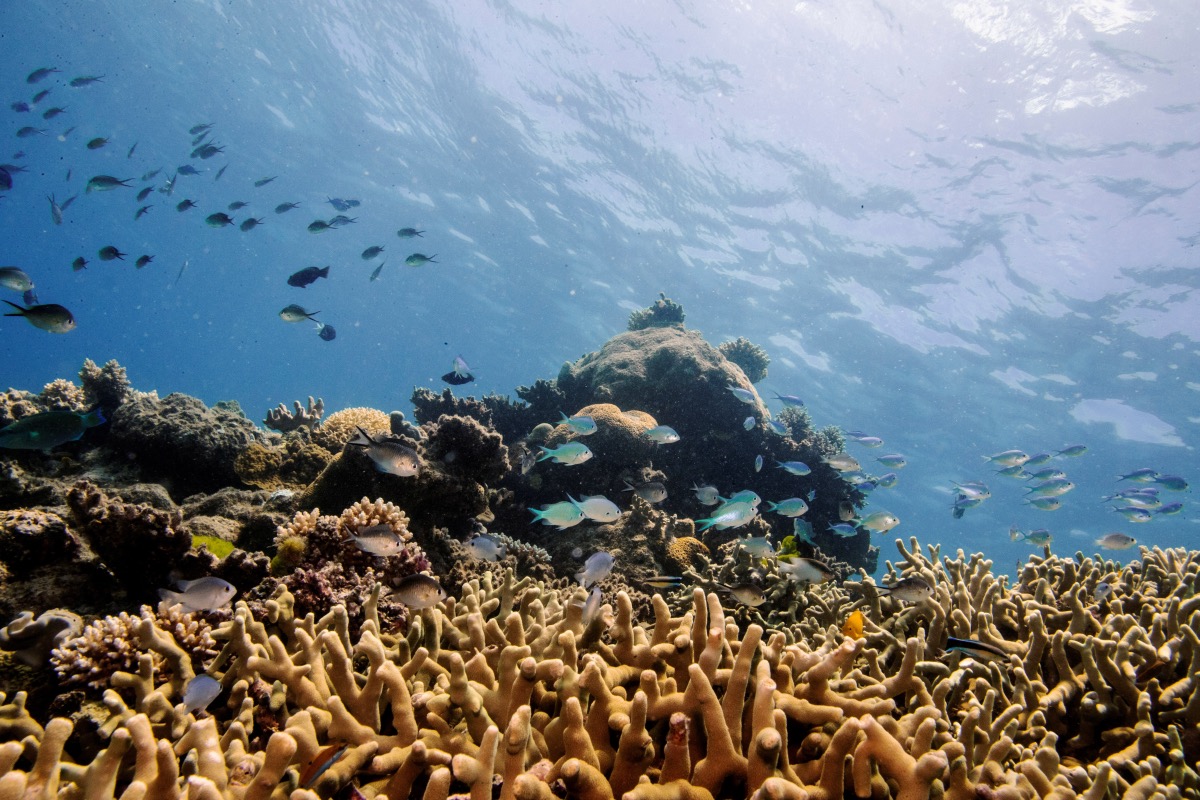Melbourne/Sydney, Australia
Reuters
Two-thirds of Australia’s Great Barrier Reef showed the largest amount of coral cover in 36 years, but the reef remains vulnerable to increasingly frequent mass bleaching, an official long-term monitoring program reported on Thursday.
The recovery in the central and northern stretches of the UNESCO world heritage-listed reef contrasted with the southern region, where there was a loss of coral cover due to crown-of-thorns starfish outbreaks, the Australian Institute of Marine Sciences said in its annual report.

Assorted reef fish swim above a staghorn coral colony as it grows on the Great Barrier Reef off the coast of Cairns, Australia onn 25th October, 2019. PICTURE: Reuters/Lucas Jackson
“What we’re seeing is that the Great Barrier Reef is still a resilient system. It still maintains that ability to recover from disturbances,” AIMS monitoring programme leader Mike Emslie told Reuters.
“But the worrying thing is that the frequency of these disturbance events are increasing, particularly the mass coral bleaching events,” he said.
The report comes as UNESCO considers whether to list the Great Barrier Reef as “in danger”, following a visit by UNESCO experts in March. The World Heritage Committee meeting where the fate of the reef was on the agenda was due to be held in Russia in June but was postponed.
In a key measure of reef health, AIMS defines hard coral cover of more than 30 per cent as high value, based on its long-term surveys of the reef.
We rely on our readers to fund Sight's work - become a financial supporter today!
For more information, head to our Subscriber's page.
On the northern region, average hard coral cover grew to 36 per cent in 2022 from a low of 13 per cent in 2017, while on the central region hard coral cover increased to 33 per cent from a low of 12 per cent in 2019 – the highest levels recorded for both regions since the institute began monitoring the reef in 1985.
In the southern region, however, which generally has higher hard coral cover than the other two regions, cover fell to 34 per cent in 2022 from 38 per cent a year earlier.
The recovery comes after the fourth mass bleaching in seven years and the first during a La Nina event, which typically brings cooler temperatures. While extensive, the institute said, the bleaching in 2020 and 2022 was not as damaging as in 2016 and 2017.
On the down side, the growth in cover has been driven by Acropora corals, which AIMS said are particularly vulnerable to wave damage, heat stress and crown-of-thorns starfish.
“We’re really in uncharted waters when it comes to the effects of the bleaching and what it means moving forward. But as of today, it’s still a fantastic place,” Emslie said.






